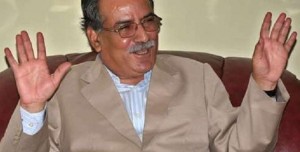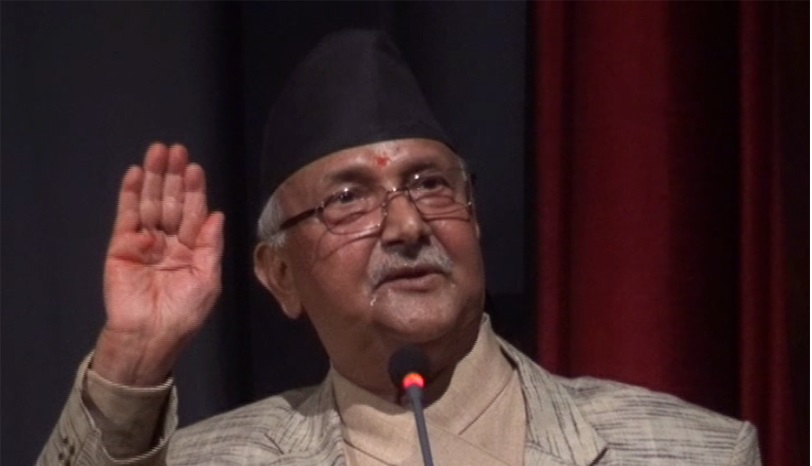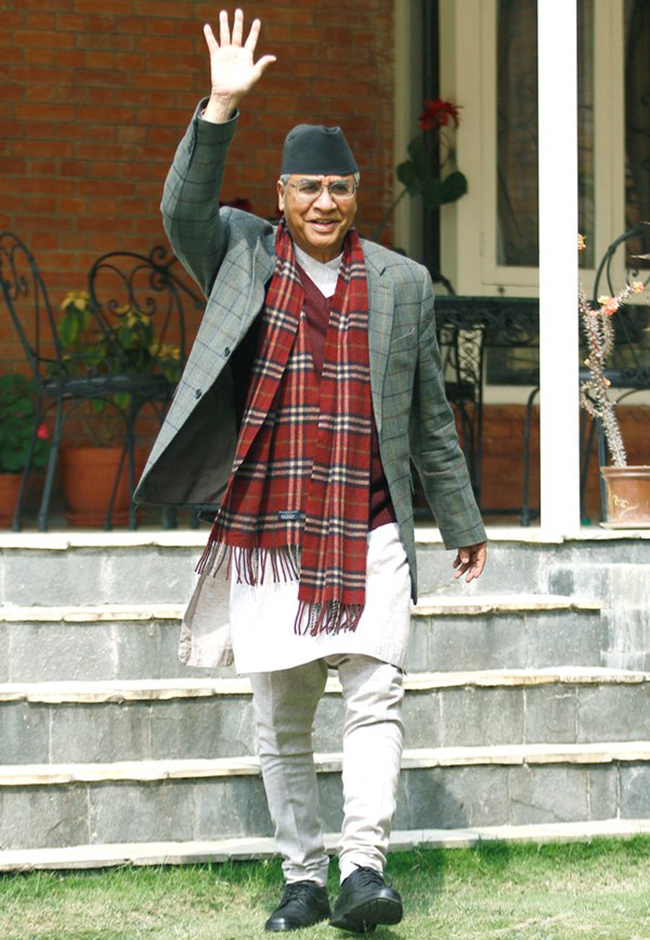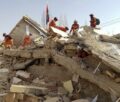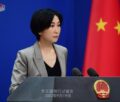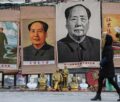Prachanda back at the Nepali wheel

By Rattan Saldi
On 04 August, Pushpa Kamal Dahal, Prachanda, began his second innings as Nepal’s Prime Minister, and he has just about nine months to sort out knotty problems K.P. Sharma Oli government of CPN (UML) – led coalition has left behind. The biggest plus for him is the support of the Nepali Congress, which has joined hands with him to end the Oli rule which had pushed the country into a crisis mode by its refusal to come to grips with the Madeshi cause in the time tested Nepali spirit of accommodating conflicting views and interests.
Prachanda’s turf space is limited though. His party, is a junior partner in the new coalition. The Maoists have 87 lawmakers as against 207 by Nepali Congress (NC). Under the 7-point deal between the Maoists (CPN-Maoist Centre and NC, Prachanda has to pass on the baton to the NC leader Sher Bahadur Deuba for the second nine-months of the new government’s term. Fresh ballot is due next year, and a new government is to be installed by Jan 21, 2018
Prachanda’s immediate task is to pave the way for full implementation of the peace process. He also will have to work overtime to remove irritants that are holding up the new Constitution promulgated last September. Moreover, people recovering from the trauma of last year’s devastating earthquake are crying for attention. So is the economy, which has become a victim of Oli-Madeshi standoff.
Will he deliver on these pledges and on the promise to hold the ballot for local bodies by March/April 2017 to usher in grassroots democracy in the Himalayan Nation, which said good-bye to the 237- year- old monarchy eight years ago?
Crystal gazing is a hazardous game but Prachanda appears to be pressing all the right buttons at least as of now whether it is foreign relations, where he and his ally NC are set to remove the pronounced tilt, the Oli government had perfected, or whether it is home front, where he is using his old channels with Madeshis to bring them back to his side.
Prachanda’s first stint as PM lasted less than a year from August 2008 to May 2009. His spat with the then Army Chief General Rookamangud Katawal over induction of his erstwhile Peoples’ Liberation Army cadres (armed Maoist rebels) into the Army is a part of Nepali folklore. So is the fact that he had to go after the then President Dr. Ram Baran Yadav reinstated Katawal rejecting his orders sacking the army chief.
There is no gain saying the fact the Maoist supremo has come a long way since 2008 when he had led the one-time rebels into the democratic mainstream. He has earned sobriquets like unpredictable, roll back expert and maverick. Yet, he has shown remarkable dexterity in manoeuvring through political minefields. This is clear by the way he has stitched the new ruling coalition. Also his readiness to do business with India.
During his a little over nine months in office as Prime Minister, K P Sharma Oli faltered on more than one count. He neither listened to his allies in the ruling coalition nor his own CPN –UML seniors on dealing with Madeshi agitation that saw more than fifty deaths and crippled the supply chain for about five months. He also overruled the suggestion by his main prop -Maoist Centre- to form a consensus government as no single party was in a position to amend the Constitution and fulfill the primary Madeshi demand – redrawing boundaries of federal provinces.
In a short-sighted move, Oli whipped up anti-India sentiment. He held New Delhi responsible for the Madeshi blockade of the border with India. Significantly, he himself made no serious effort to resolve the crisis; instead tried to crush the movement with iron hand. In fact, he had allowed the crisis to linger on hoping that it would steam off on its own.
Speaking at a Conference on National Security (Kathmandu) Oli openly accused India of interfering. The process of government change was “not an automatic process but conducted by remote control”, he remarked and went on to add that “India’s role was primarily behind it.” He blatantly tried to raise nationalistic decibel by accusing India of involvement in the Madeshi blockade that had led to shortages and sufferings.
While on a visit to Beijing in March last, Oli signed his much publicized Transit Treaty with China and an agreement to use its ports for Nepal’s trade with third countries. During the border blockade with India, he even imported a small quantity of Chinese petroleum products.
It was a symbolic import, nothing more, nothing less. Because of the distance and mountainous topography such a venture is neither feasible nor economically viable; it nevertheless offered Oli a blunt weapon to make a point vis-à-vis India and the Madeshis. Needless to say, relations between India and Nepal dived to the lowest ebb.
Nepal’s trade with third countries is through only Kolkata port. Visakhapatnam port also has been opened to Nepalese traders, an agreement for which was signed during Oli’s visit to New Delhi in February last.
As Prime Minister in 2008-09, Prachanda, riding on the wave of a whipped up popular sentiment, was known for his anti-India stance. He stood for scrapping of India- Nepal Treaty of Peace and Friendship and redrawing of several other accords with India. But he now appears to be more mature, realistic and pragmatic in his approach towards neighbours and in dealing with peoples’ issues. He has promised to pursue a ‘balanced’ foreign policy.
The real test to the Maoist supremo would be amending the Constitution to accommodate Madeshi demand for redrawing the boundaries of seven provinces where they have a significant presence and interest besides giving them proportionate representation based on population in government. A Constitutional amendment would require two-third majority in Parliament. It will remain a mirage unless former Prime Minister K.P. Sharma Oli’s party, the Communist Party of Nepal (Unified Marxist Leninist) come on board.
Maoists and the Nepali Congress signed with the United Democratic Madeshi Front, UDMF, and the Federal Democratic Alliance, FDA a three-point pact minutes before they voted for Dahal in Parliament. It envisages firming up the statute amendment proposal on the basis of political consensus to address Madeshi demands. A Commission headed by a retired judge of Supreme Court to probe incidents of violence during the Madeshi agitation, martyr status to those killed, medical assistance to the injured, and financial assistance to the families who had lost their earning are the other components of the pact.
Prime Minister Dahal has held one round of talks with UDMF and FDA leaders and announced rupees one lakh compensation to the families of those killed during the Madeshi agitation. He has invited both parties to join his coalition government but the Madeshi leaders appear still undecided though.
The key to stability and peace in Nepal lies in deft handling of the Madeshi agitation; for this flexibility and not rigid postures would be needed. The path is slippery but not unfathomable given the changed political climate in the Himalayan nation, going by what Prachanda had told KP Sharma Oli before withdrawing support to the CPN-UML led government on 13 July 2016.
“Our party (CPN-Maoist Centre) sees the need for national consensus to implement the new statute, complete the remaining tasks of peace process along with the transitional justice, resolve the issues raised by Madhesis, Janjaatis and Tharus, and provide relief to the people and carry out reconstruction of the country in the wake of the last year’s devastating earthquake,” Prachanda told Oli in his letter announcing that he was pulling out. He also vowed to expedite infrastructure development across the country and reconstruction in the earthquake hit region.
From what is seen and heard in Kathmandu, Prime Minister Dahal has got down to his work without much ado.
-
Book Shelf
-
 Book Review
DESTINY OF A DYSFUNCTIONAL NUCLEAR STATE
Book Review
DESTINY OF A DYSFUNCTIONAL NUCLEAR STATE
- Book ReviewChina FO Presser Where is the fountainhead of jihad?
- Book ReviewNews Pak Syndrome bedevils Indo-Bangla ties
- Book Review Understanding Vedic Equality….: Book Review
- Book Review Buddhism Made Easy: Book Review
- Book ReviewNews Elegant Summary Of Krishnamurti’s teachings
- Book Review Review: Perspectives: The Timeless Way of Wisdom
- Book ReviewNews Rituals too a world of Rhythm
- Book Review Marx After Marxism
- Book Review John Updike’s Terrorist – a review
-
-
Recent Top Post
-
 NewsTop Story
What Would “Total Victory” Mean in Gaza?
NewsTop Story
What Would “Total Victory” Mean in Gaza?
-
 CommentariesTop Story
The Occupation of Territory in War
CommentariesTop Story
The Occupation of Territory in War
-
 CommentariesTop Story
Pakistan: Infighting in ruling elite intensifies following shock election result
CommentariesTop Story
Pakistan: Infighting in ruling elite intensifies following shock election result
-
 CommentariesTop Story
Proforma Polls in Pakistan Today
CommentariesTop Story
Proforma Polls in Pakistan Today
-
 CommentariesTop Story
Global South Dithering Away from BRI
CommentariesTop Story
Global South Dithering Away from BRI
-
 News
Meherabad beckons….
News
Meherabad beckons….
-
 CommentariesTop Story
Hong Kong court liquidates failed Chinese property giant
CommentariesTop Story
Hong Kong court liquidates failed Chinese property giant
-
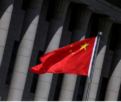 CommentariesTop Story
China’s stock market fall sounds alarm bells
CommentariesTop Story
China’s stock market fall sounds alarm bells
-
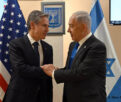 Commentaries
Middle East: Opportunity for the US
Commentaries
Middle East: Opportunity for the US
-
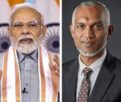 Commentaries
India – Maldives Relations Nosedive
Commentaries
India – Maldives Relations Nosedive
-
AdSense code


